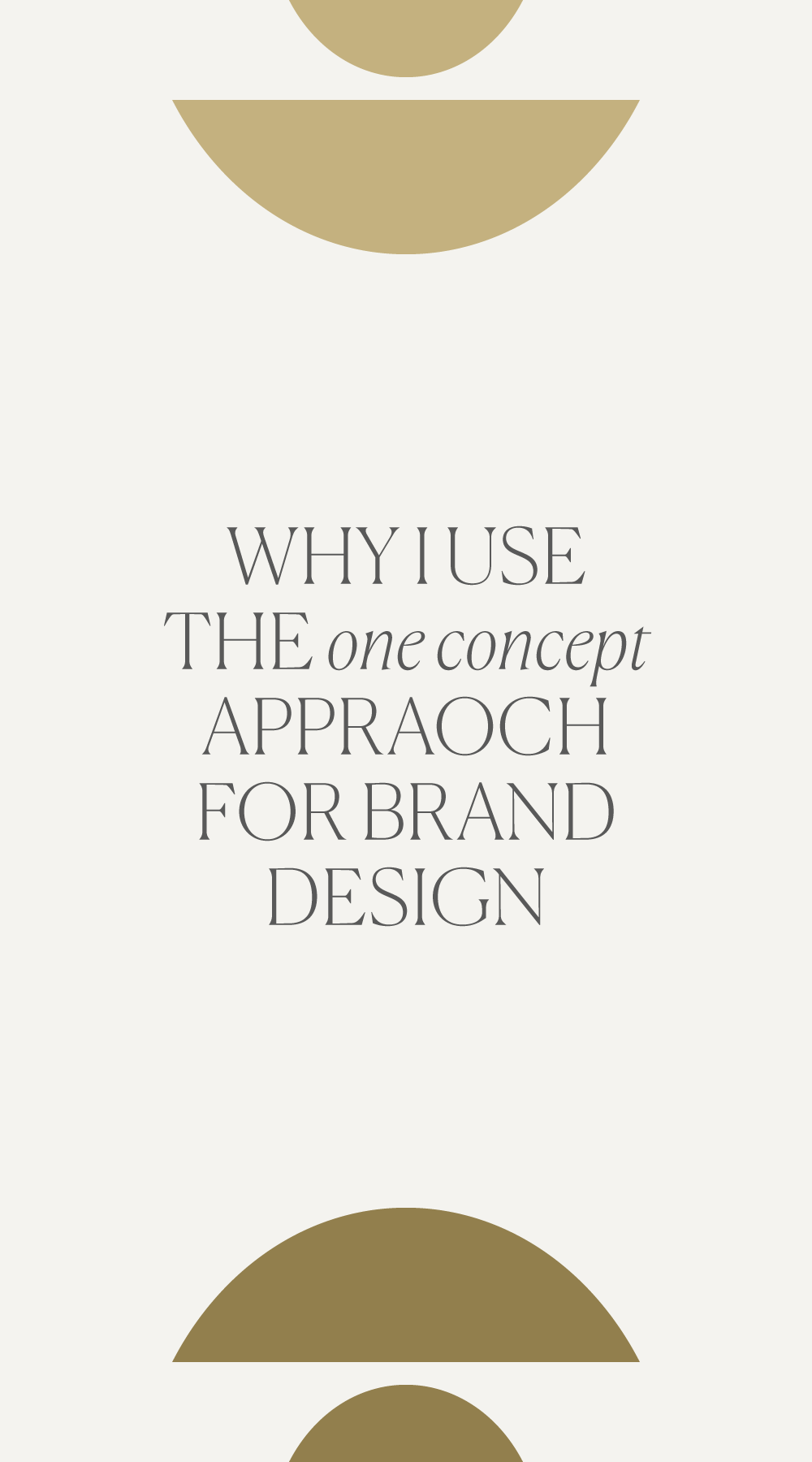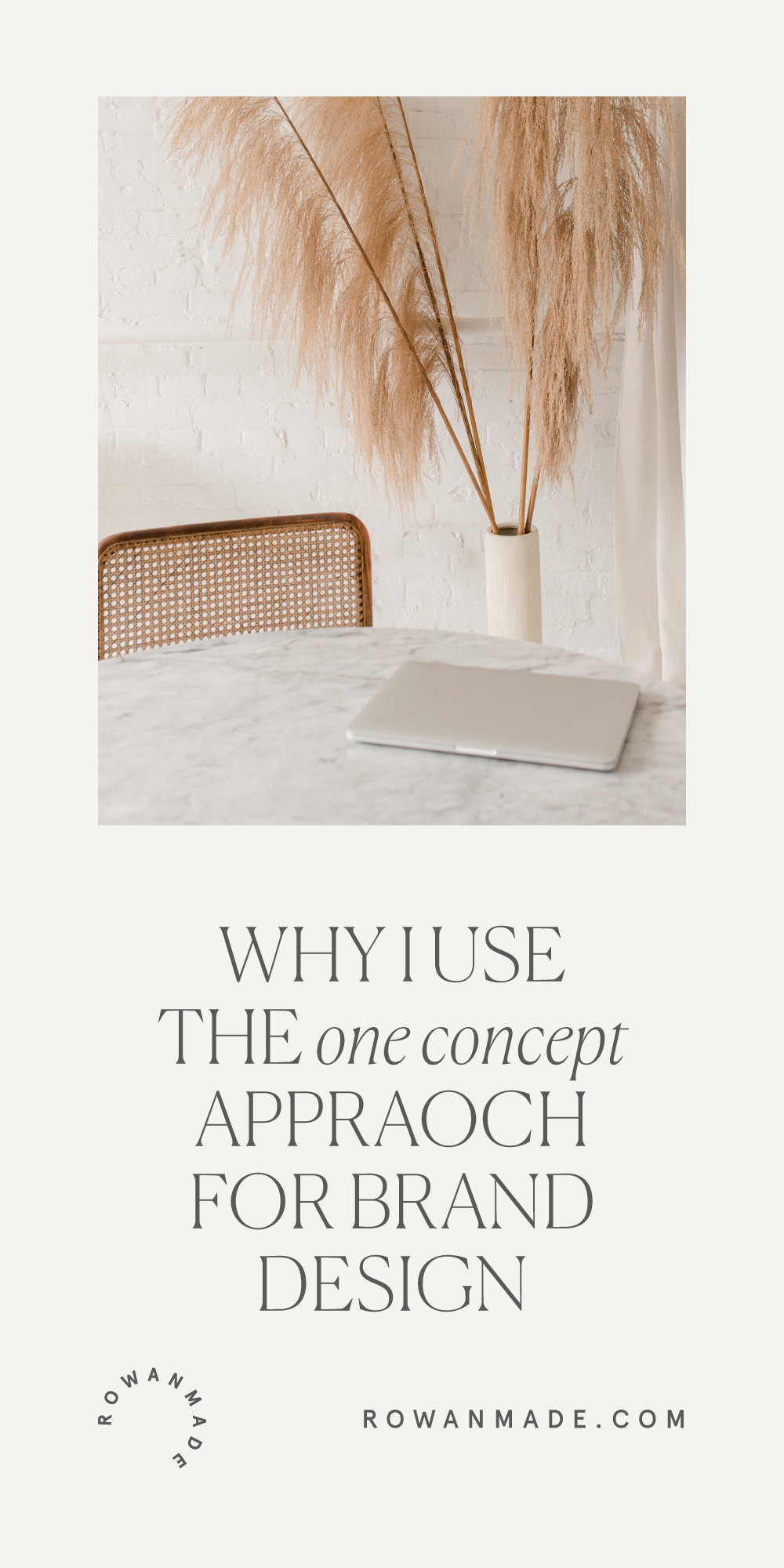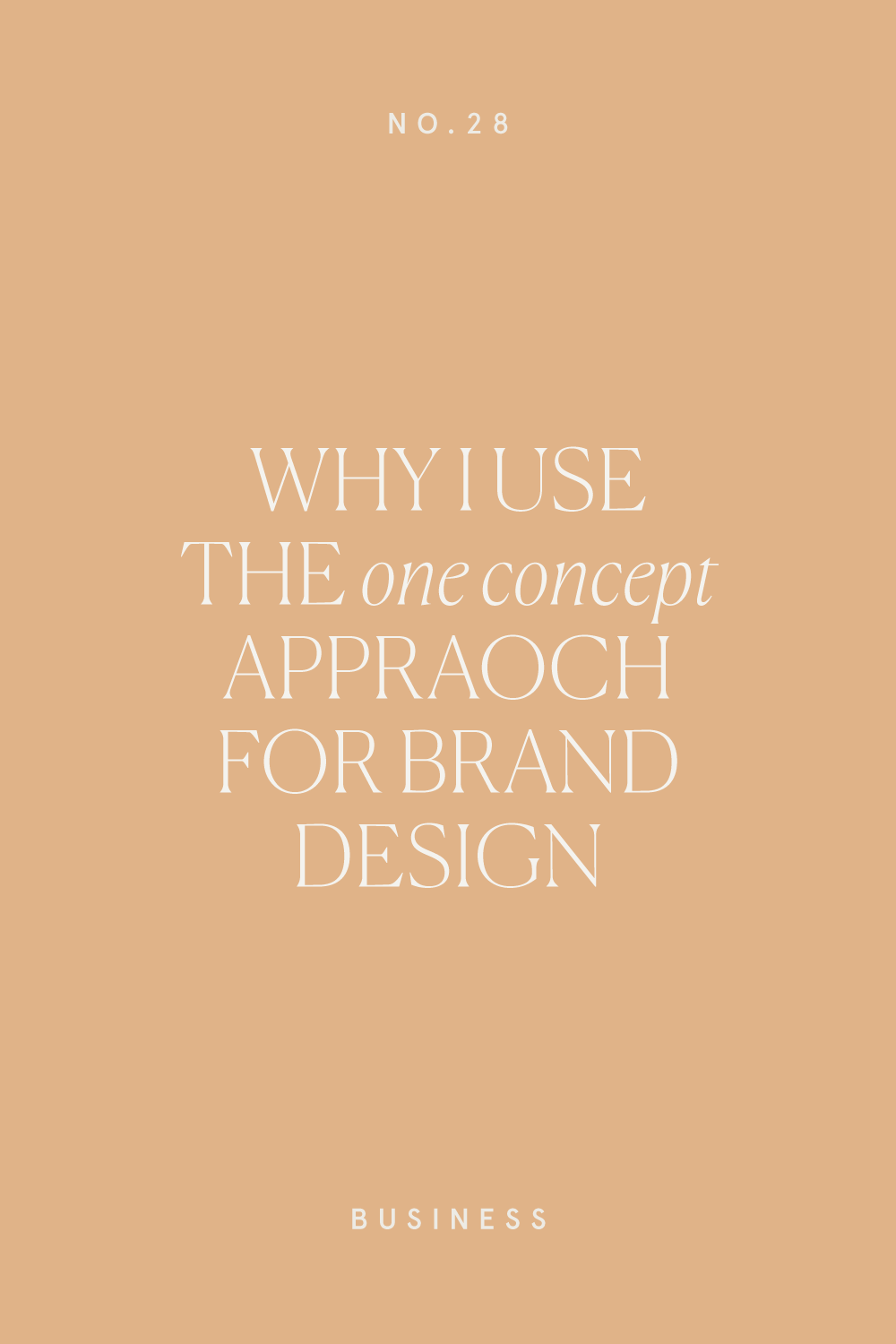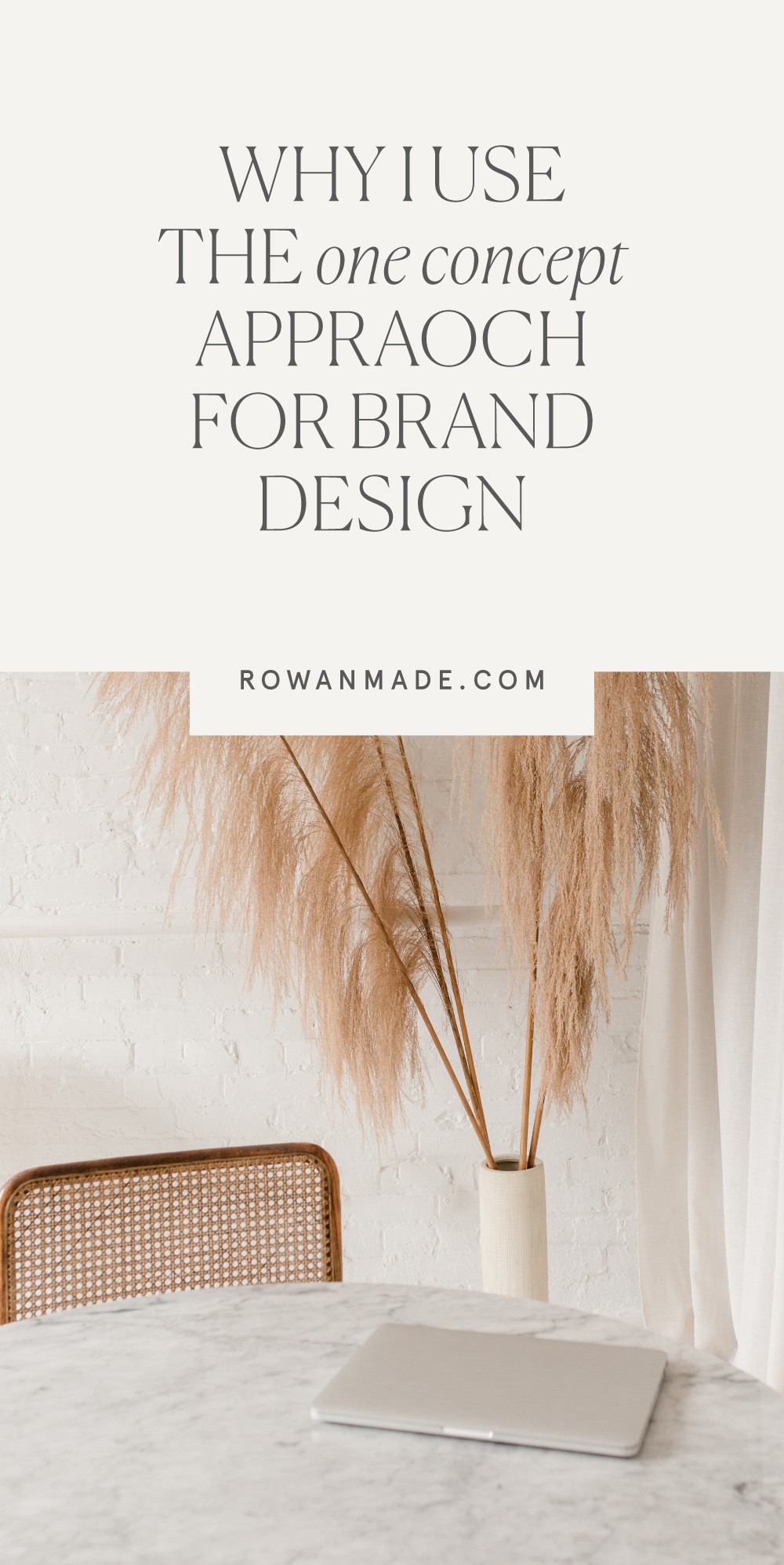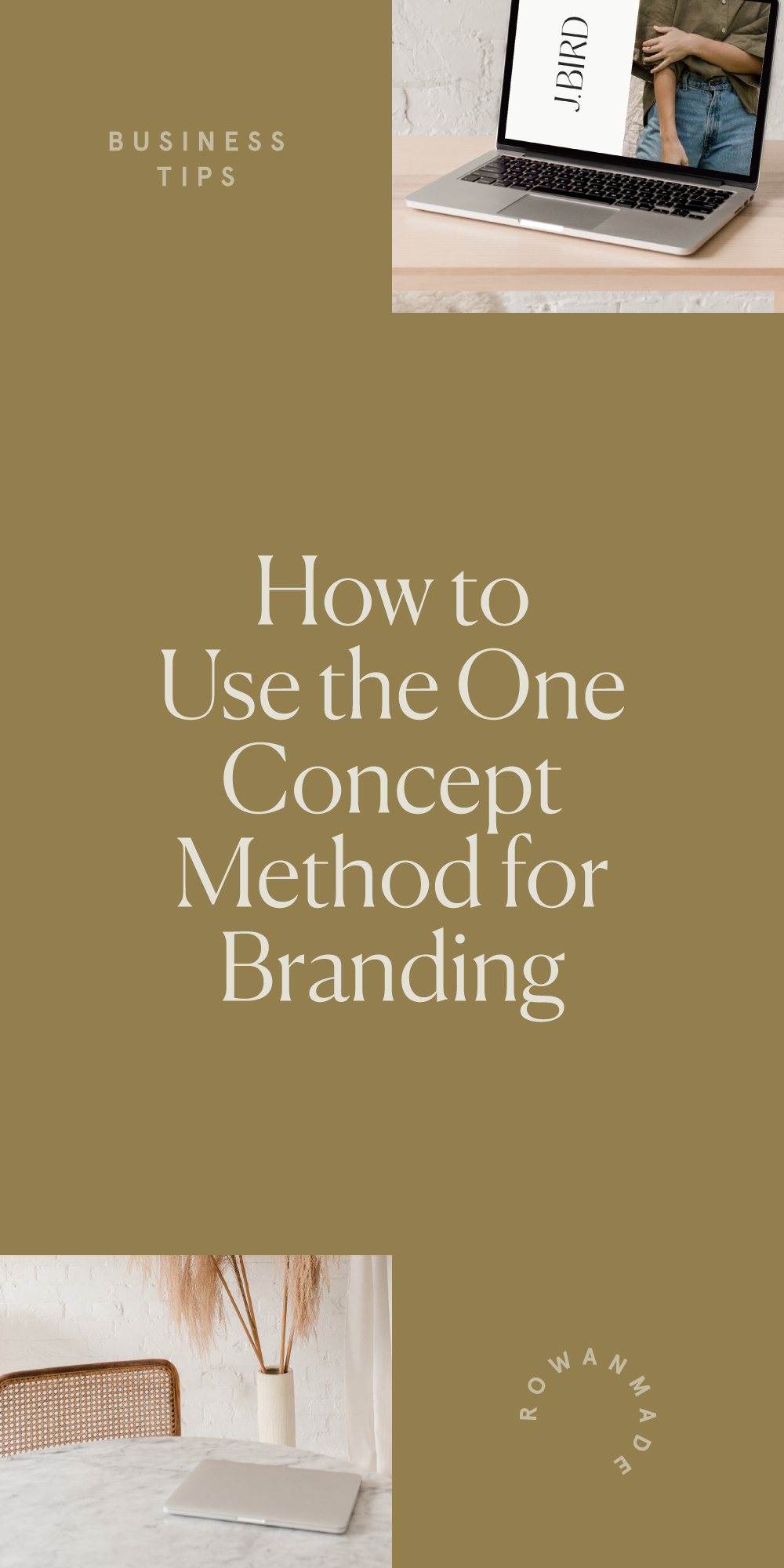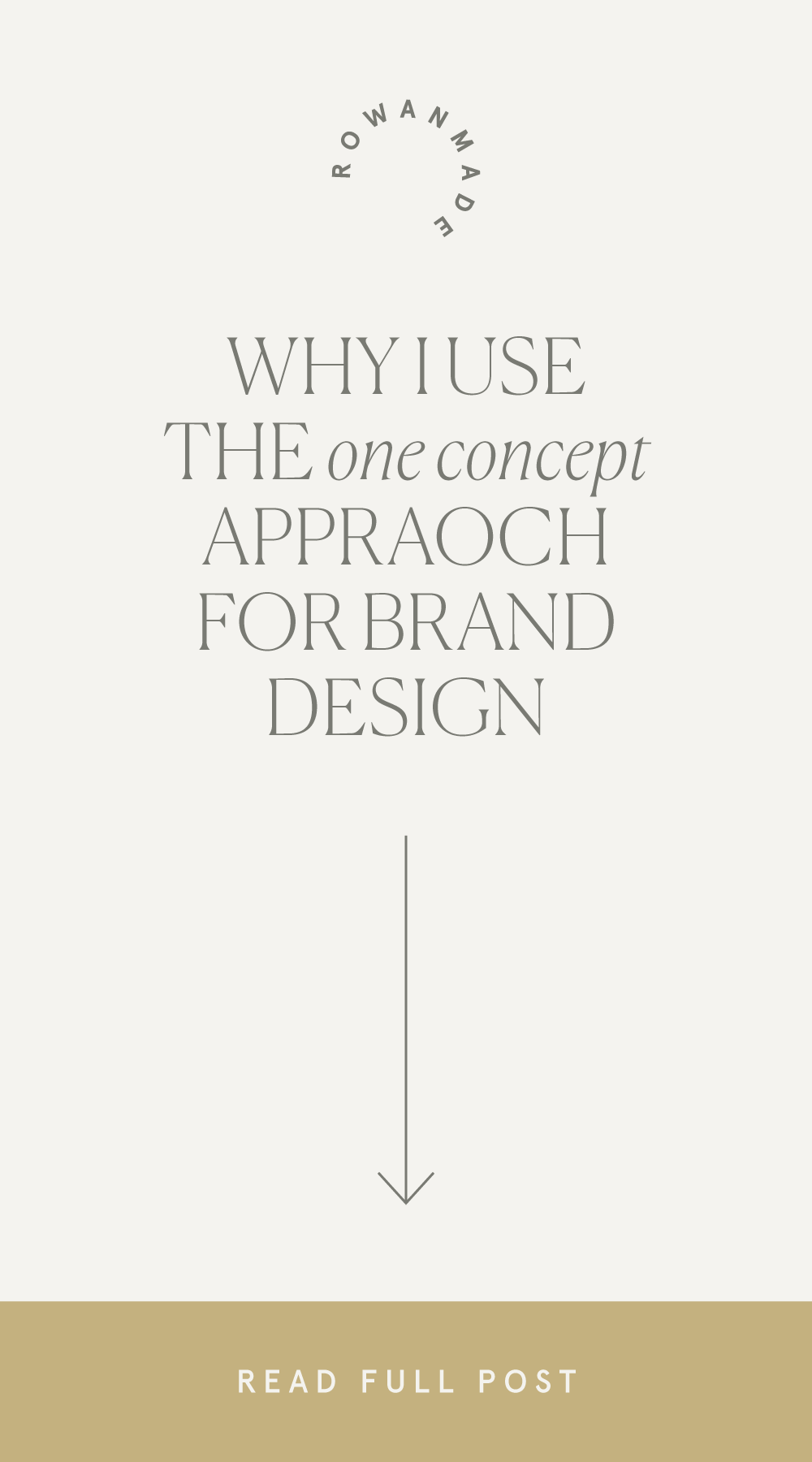Using The One Concept Approach
In the design world, it’s fairly common to share multiple concepts with clients. In fact, it’s industry standard. But is that what we should really be doing? For the last six months, I’ve been giving the “one concept approach” a go here at Rowan Made and can honestly say that it’s been an absolute game changer.
Now, I know that many designers are curious about this idea and would even like to implement it themselves, but are paralyzed by fear. And honestly, I feel ya. Prior to testing the waters myself, I had wanted to try out this particular approach for years, but couldn’t get myself to do it. I was afraid of following my intuition. Afraid of rejection. And above all, afraid of having to explain and stand firm on our beliefs amongst a world that is constantly in search of more more more.
Simply put, worry and doubt held me back. Until finally, I hit my wits end.
THE PROBLEM
You see, for the majority of my career, I’ve presented two or three design options. Like most, this begins with sketching. Then, I slowly move everything onto an artboard in Illustrator, explore some more, and soon thereafter, experience a beautiful AHA moment surrounding the best, most succinct design solution for whatever project it is that I’m working on.
At this point, all I ever want to do is dive head first into that particular solution until it feels solid. The problem, however, was that for so many years, I couldn’t. I had to divide my time evenly between two or three concepts. So as much as I wanted to put the majority of my focus on a direction that I knew, deep down, was the strongest, I couldn’t. I had to move on to another thing. And then another.
Most of the time, this meant that I was presenting one solid solution, coupled with two others that felt mediocre. And you know what? This only led to MORE problems, the most common of which were:
01. CONFIDENCE SQUASHING: First, I found that my own confidence as a designer was continually squashed. In fact, over time, I noticed that I’d even anticipate client feedback and make certain selects based on my assumptions, rather than leaning into my own intuition and expertise.
Seriously though, the continued inclusion of mediocre design has the potential to dilute our own judgement, simply because it’s always there and becomes “normal.”
02. SUBJECTIVE OPINIONS: Second, is the prevalence of subjective opinion. If you give somebody a handful of options, of anything, they’ll be encouraged to choose. Because they have to!
But design is not for the client. It’s for the client’s audience. So if we’re forcing the client to make this particular (big) decision, there’s a good chance that subjectivity will get in the way of keeping the brand’s best interests at heart.
For example, have you ever received feedback that included phrases like “I like" and “I don’t like?” Me too. As humans, it’s easiest for us to make decisions based on what we like and don’t like simply because we do it every single day. Because of this, it makes absolute sense that a client would tap into their own personal preference here. It’s what they know!
03. FRANKENSTEIN SOLUTIONS: The third problem is maybe my least favorite of them all, simply because it involves becoming a frustrated pixel pusher.
For example, have you ever had a client that liked different aspects from all of your concepts, followed by a suggestion to combine everything into one super concept? Been there, done that. And sadly, this usually results in what I like to call a “frankensteined” design. A concept that started off strong, but was eventually cut apart and stitched together with various other elements.
Whenever this used to happen, I would try my best to explain why certain things just don’t go together. Or, if necessary, why the "frankensteined" design no longer fit within the project's original strategy. But at this point, I found that many clients were impressed with their idea and thus, unable to appropriately critique any problem areas.
And suddenly, they’re the designer. Not you.
- - - - - -
In reality, you are the expert. And because of that, none of the above needs to happen if you truly allow yourself to do the job you were hired to do.
IN PRACTICE
Still scared? I get it. But don't worry, I’m going to go over how we’ve implemented the one concept approach here at Rowan Made in a way that works.
01. SET EXPECTATIONS: First things first. This approach is not industry standard, so it’s pivotal that you’re absolutely clear about how you work. This means that before a client signs on, they need to be okay with the fact that they’ll only be receiving one concept.
We do this by including a little spiel within our pricing and process guide. Then, from there, we discuss the idea of “one concept” during our initial consultation call. And finally, we also reiterate everything within their estimate.
02. STRATEGY: Secondly, this approach absolutely does not work if you aren’t relying on any sort of strategy or keeping the brand’s best interests at heart. For this reason, all of our projects begin with a deep dive, where we send over an in-depth questionnaire in order to better understand the ins and outs of our client’s business.
Then, from there, we put together a comprehensive brand strategy that’s sole purpose is to not only assure that we’re all on the same page, but to provide fresh insight as well.
So before we even BEGIN to think about design, a solid strategy is set in place and approved. By everyone. That strategy then remains at the forefront of everything we do, for the entirety of a project. And that’s key!
03. STRONG PRESENTATION: Because we present only one concept, we make sure that our initial presentation is killer. I could write a whole other post on this subject (and probably will in the future), but basically, we go all out.
As designers, it’s easy to picture how a logo will live and breathe out in the world. Your clients, however, need to be shown.
We do this by not only including the obvious, like overall design and rationale, but expanding from there through the use of contextual examples. For example, we may utilize a mockup of business cards, buttons, or stationery to visually show how their logo (and accompanying assets) can be applied. Or, we may whip up a mockup of Twitter or Instagram’s interface to better illustrate the digital side of things.
Beyond mockups, you can also pair various elements with photography, patterns, or color as well to show how their concept can (and will) shine. This way, they don’t have to guess. And that’s a good thing. ;)
04. GUIDE FEEDBACK: Once you’ve sent over your presentation, it’s time to guide your clients into what’s next. Otherwise, subjectivity may find a way of sneaking itself back in. I actually shared my thoughts on this topic recently, so instead of reiterating all of the details, I’d encourage you to check out the entire post, right here.
The one thing I do want to highlight, however, is that we always offer two rounds of refinement. Meaning, we don't just send over one concept and call it a day. Design is an iterative process and we thrive on collaboration with all of our clients. So after a concept is initially presented, we move into an open and honest discussion about what's working, as well as where there's potential to grow. And again, that's key!
HOW IS IT GOING?
So far, the one concept approach has been working wonderfully! We've experienced more synchronicity than ever and thus, less rounds of refinement. Which is a major plus. ;) In fact, there's even been a few clients that didn't have any edits at all, something that literally didn't happen until we finally made the switch to delivering only one concept.
- - - - - -
So there you have it, the one concept approach! I truly hope that this practice will become more standard over time, so if you’re willing to give it a go, let me know in the comments section below. The more, the merrier! And if you still have any lingering questions or fear, I’m happy to be a beacon of encouragement for that as well. Just let me know.
PS. A big thank you to those of you who have walked this path before me, including Kathleen Shannon (who blew my mind on the subject 5 years ago at the first Designer Vaca), Melissa Yeager, and Jamie of Spruce Rd. Your approach and encouragement is what finally got me to make a shift and I hope that more designers will do the same.


